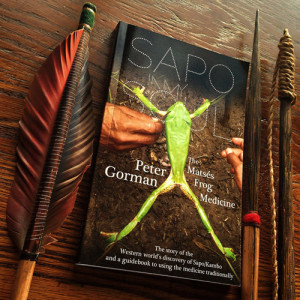
For good reason, gathering spring water has become increasingly popular as more and more people experience the undeniable benefits of consuming pure, clean, living water. Wild water is of course found in wild places, and with the increased popularity comes increased traffic and potential for damage to sensitive ecosystems in which springs are found.
Here are 8 tips to help you maintain right relationship with your water source.
Go Lightly
Springs are often found in wild places – in forests, in caves or along roads and highways on the edges of forests. Sometimes, they’re found on or near private land, protected ares, or may be the water source for small communities. Wherever you find a spring, go lightly and with the greatest respect.
Clean water is under threat in Canada and around the planet. Springs are vibrant ecosystems, micro-climates full of life and wonder. Help care for and maintain these places for all who visit – whether it’s for next month, next year or the next seven generations, do everything you can to be a good steward and strong guardian of water, forests and all life.
Keep it Clean
It’s a whole new era, yet littering occurs and it’s always sad to see a piece of plastic in otherwise pristine wilderness.
Avoid leaving anything behind at the spring, like bits of plastic, bottle caps, wrappers, broken glass.
Whether intentional or not – please don’t litter – and if you see trash left behind – please pick it up and recycle appropriately.
Know Your Source
Before you consume spring water be sure it is safe – ask around, talk with locals or other spring water enthusiasts and consult findaspring.com to ensure the water you’re collecting and drinking is not contaminated and is in fact a spring and not a stream or river (which may provide you with giardia, instead of vibrant health).
Consider getting a TDS Meter – a device used to test the Total Dissolved Solids in a solution. Generally speaking a lower TDS signifies a more pure drinking water.
Be Safe
Whether you’re collecting spring water in a secret spot in the woods, alongside a road or highway, or at a more developed location – be safe, be aware, and use common sense when gathering spring water.
Conditions can be slippery, muddy and unstable and water can be surprisingly and deceptively heavy. Trust me – you do not want to slip and fall while carrying a six-gallon glass carboy full of water.
Know your surroundings. Take your time.
Be aware of spring-specific warnings: A spring near Port Alberni, BC warned of cougar sightings in the area at dusk. Good advice when we found ourselves taking longer than expected and were deeper off the path than we first thought. Check findaspring.com for updated information on springs around the world.
Be Smart
Water is heavy. Rocks are slippery. Roads are dangerous. Glass breaks.
Use your ingenuity when gathering spring water. If you’re hesitant to carry glass – collect in plastic bottles and transfer to glass at a safe location. Use sturdy crates, or carrier straps and handles to help ease the load.
Be Clear
Sometimes springs may be in or near a Provincial or National Park, in which case you may be approached by a Park Warden, or a Conservation Officer. Taking anything – whether it’s a rock, plant or artifact from Provincial or National Parks is against Regulations. Technically these regulations also include water. Collecting spring water for commercial use is prohibited – but gathering spring water in Parks for personal use is often seen as a “grey area”.
However, it’s no secret that park wardens themselves know very well the delicious benefits of spring water, and you may often find common ground.
In a recent case in Alberta, there were concerns regarding the exact location of the Canmore spring, and whether or not it was located inside Provincial Park boundaries. Several spring water enthusiasts were met with warnings and potential fines as a result of the confusion. To help clear things up, a gracious spring water guardian teamed up with a park warden, and using GPS determined the spring to be in fact outside of Park boundaries.
Working together and communicating in a courteous, friendly and clear manner benefits everyone.
Water is Precious, Time is Infinite
Yes, we generally live fast-paced-ultra-busy-fully-on-intense-lives these days – no doubt about it. However, gathering spring water can encourage a practice of slowing and flowing.
Make a day of it, make it special.
Remember, springs are an abundant source of Negative ions – negatively charged electric atoms and molecules that do a whole lot of beautiful things for you – like relieve stress, cast away depression, boost your immunity, and lighten your mood.
Give Thanks
Whether you preform a small ritual, perhaps by leaving (natural) Tobacco tucked gently at the the base of a tree, or simply whisper “thank you” when you’re leaving a spring – offer your gratitude to the water, to the forest and to all life.


